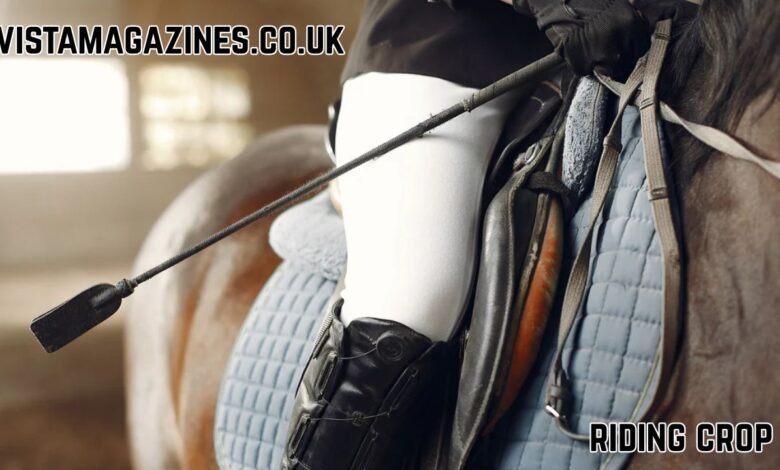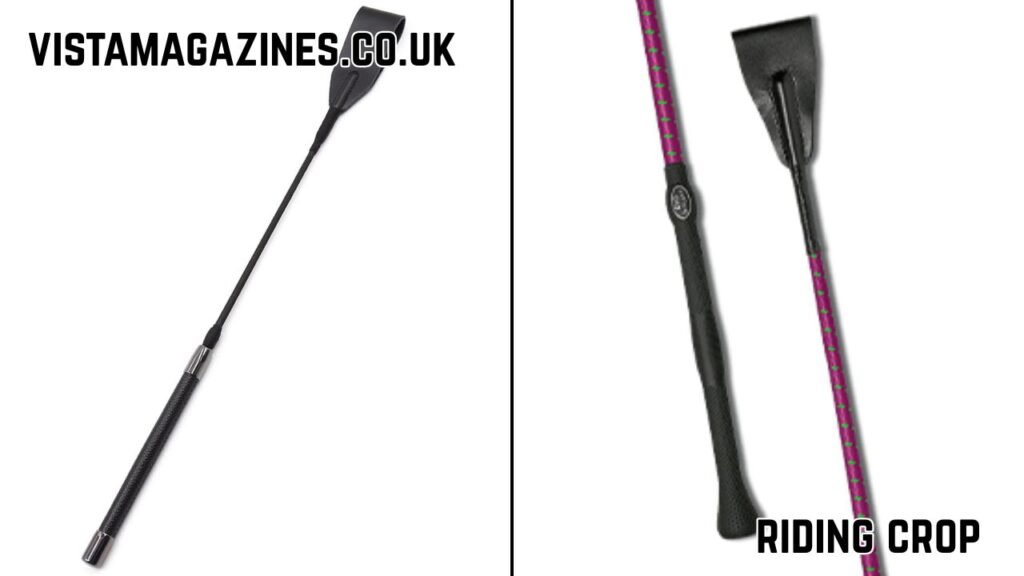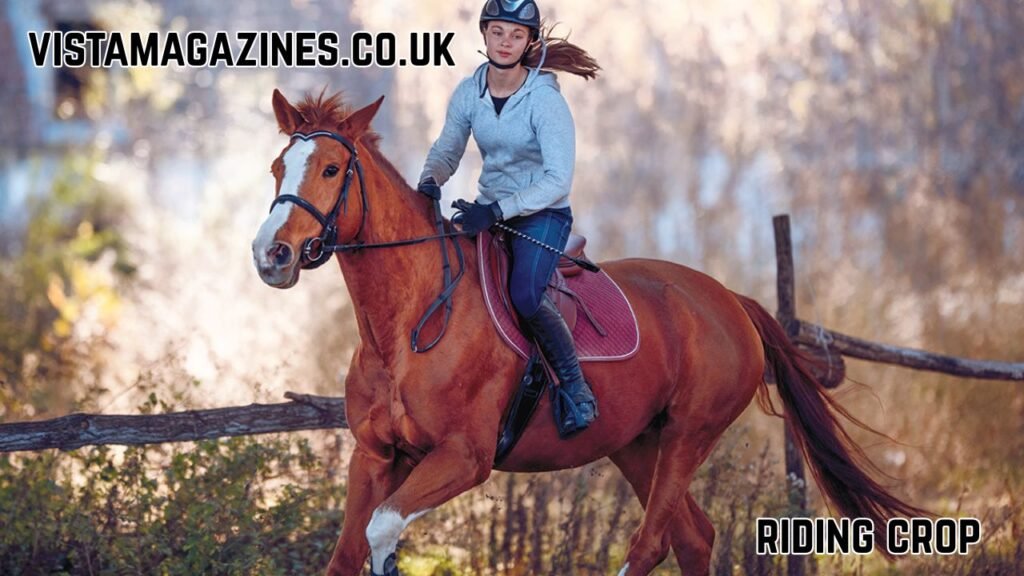Riding Crop – Understanding Its Meaning, Uses, and Importance in Horseback Riding

Introduction: The Timeless Symbol of Equestrian Mastery
The world of horseback riding is rich with history, tradition, and precision — and few tools embody these qualities like the riding crop. Whether used for guidance, communication, or discipline, the riding crop remains one of the most recognized accessories in equestrian culture.
For beginners and professionals alike, understanding what is a riding crop and how to use it properly is essential. From the elegant leather riding crop to the practical horse crop used in training, this tool plays a vital role in both riding technique and horse welfare.
In this comprehensive guide, we explore everything you need to know about riding crops, including their meaning, function, variations, and etiquette in the equestrian world.
What Is a Riding Crop?
A riding crop is a short, flexible tool used by equestrians to assist in controlling and directing a horse. Typically made from leather or synthetic materials, a riding crop helps reinforce a rider’s leg commands, providing a clear, gentle cue to the horse.
While some may confuse it with horse whips, a riding crop is different in both design and purpose. It is shorter, features a small flap or loop at the end, and is primarily used as a communication aid — not as a punishment tool.
So, when people ask, “What’s a riding crop?”, the answer lies in its purpose: a respectful, subtle way to enhance the connection between horse and rider.
Riding Crop Meaning and Purpose
The riding crop meaning extends beyond its physical form. It symbolizes precision, discipline, and the partnership between human and horse.
In equestrian training, the riding crop acts as an extension of the rider’s arm. It allows for clear communication, encouraging the horse to move forward, adjust direction, or respond more accurately to commands.
A properly used riding crop does not cause pain — instead, it provides gentle reinforcement, reminding the horse of the rider’s intent.
The Anatomy of a Riding Crop

To understand how a riding crop whip works, it’s helpful to know its parts:
- Handle: Usually wrapped in leather or rubber for grip.
- Shaft: The flexible body of the crop, often made from fiberglass or carbon fiber.
- Keeper or Slapper: The flat leather end that makes light contact with the horse.
- Wrist Loop: Found on some models to prevent the crop from being dropped during riding.
Each part of the riding crop contributes to its function, balancing control with comfort.
Riding Crops vs Horse Whips: What’s the Difference?
Although horse whips and riding crops are related, they serve different purposes in horseback riding.
- A riding crop is shorter (about 24–30 inches), designed for quick, precise signals.
- A horse whip or dressage whip is longer (up to 45 inches), used for extended reach during training.
While a horse whip may be used for groundwork or specific disciplines like dressage, the riding crop is more common for general horseback riding, show jumping, and eventing.
Types of Riding Crops
Over time, many variations of the riding crop have been developed to suit different riding styles and needs. Common types include:
- Leather Riding Crop: The classic design, combining durability and elegance.
- Jumping Crop: Short and stiff, designed for quick response during jumps.
- Training Crop: Slightly longer, offering flexibility for subtle cues.
- Decorative Crop: Used in shows or parades, often featuring ornate handles.
Each riding crop type emphasizes balance, comfort, and communication between horse and rider.
How to Use a Riding Crop Properly
Using a riding crop requires skill, sensitivity, and understanding of horse behavior. Here’s how professional riders recommend using it:
- Hold it correctly: The crop is usually held in the inside hand, resting across the thigh.
- Use it sparingly: A gentle tap reinforces a leg cue; it should never replace proper riding technique.
- Avoid overuse: Excessive or harsh use of a riding crop whip can harm trust and training progress.
Proper use of the riding crop enhances communication, strengthens discipline, and promotes harmony between horse and rider.
The Role of a Riding Crop in Horseback Riding
In crop horseback riding, the tool serves as an extension of the rider’s intent. It helps encourage forward motion, improve response time, and refine commands.
A light tap from a horse riding crop is often all that’s needed to remind a horse of a command — particularly during jumping or competition. The key is timing: using the riding crop precisely when the cue is given ensures the horse understands and reacts appropriately.
Horse Welfare and Ethical Crop Use
A responsible rider always prioritizes the welfare of their horse. The riding crop should never be used out of frustration or anger. Instead, it should reinforce clear communication.
Animal welfare organizations and equestrian federations emphasize ethical riding crop use. Competitions even regulate how and when a horse crop can be used to ensure fair treatment.
When used correctly, a riding crop is a harmless tool that fosters respect and understanding — not fear.
Choosing the Right Riding Crop
Selecting the perfect riding crop depends on your riding discipline and experience level. Consider these factors:
- Length: Jumping crops are shorter; training crops slightly longer.
- Material: Leather crops provide a traditional feel, while synthetic versions offer flexibility.
- Grip: Handles should fit comfortably in your hand for secure control.
- Balance: A well-balanced riding crop enhances timing and precision.
Investing in a quality leather riding crop ensures durability and comfort for both rider and horse.
Maintenance and Care for Riding Crops
To preserve the lifespan of your riding crop, clean it regularly using a damp cloth. Avoid soaking or bending it excessively, as this may weaken the shaft. Store it in a dry, cool place away from direct sunlight.
Well-maintained riding crops not only last longer but also perform better during rides.

The Symbolism of the Riding Crop in Equestrian Culture
Beyond its practical use, the riding crop has become a symbol of grace, authority, and precision. It represents the delicate balance between control and communication in equestrianism.
In competitions, the riding crop reflects professionalism — a rider’s ability to maintain discipline while showing respect for the animal.
Riding Crop Meaning in Modern Times
The riding crop meaning today extends beyond the equestrian world. It has found a place in fashion photography, movies, and pop culture as a symbol of confidence and control.
However, in its truest sense, the riding crop remains an essential equestrian tool — a bridge of communication between horse and rider.
Conclusion: The Legacy of the Riding Crop
The riding crop is far more than a mere accessory. It’s a tool of precision, respect, and partnership. From the earliest days of horseback riding to modern equestrian sports, the riding crop has remained a timeless symbol of discipline and mastery.
When used ethically, with care and understanding, the riding crop enhances communication and strengthens the bond between rider and horse. It reminds us that true control in riding comes not from force, but from trust, skill, and respect.
Also Read: Бишкоти ди Прато – The Timeless Italian Biscuit Tradition

